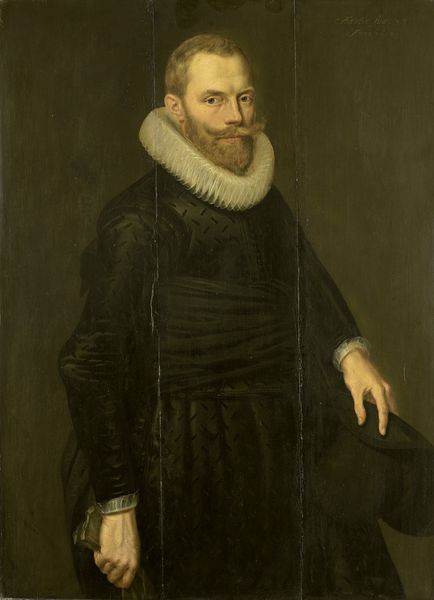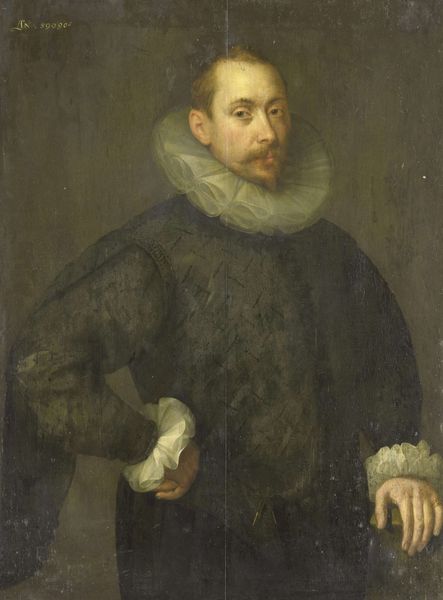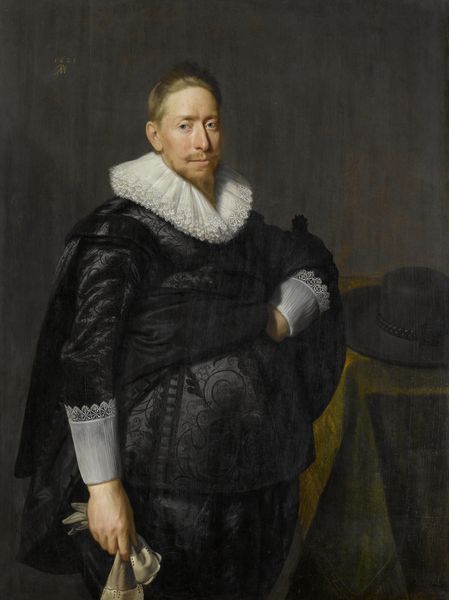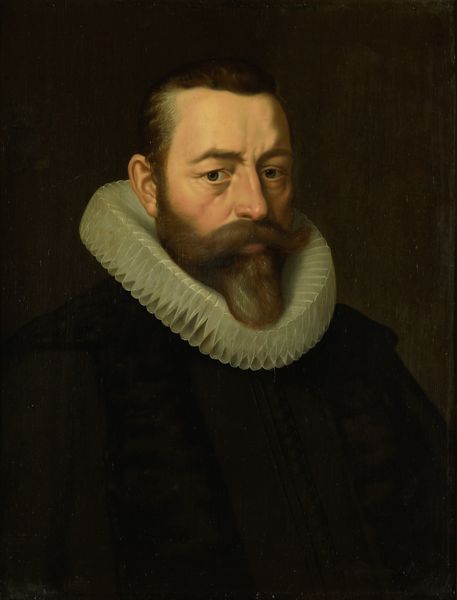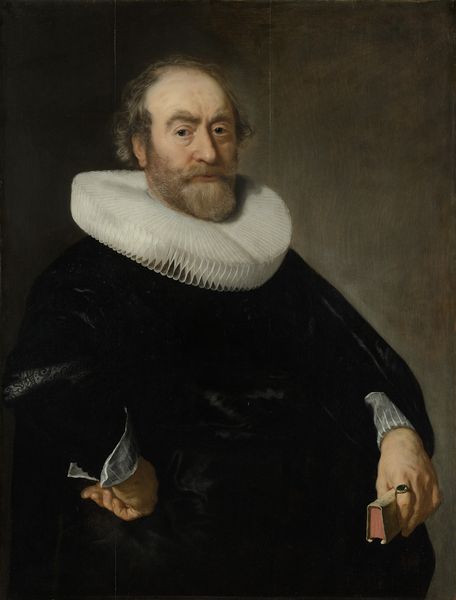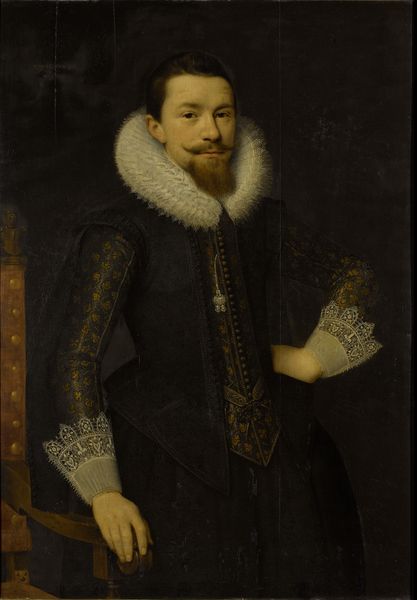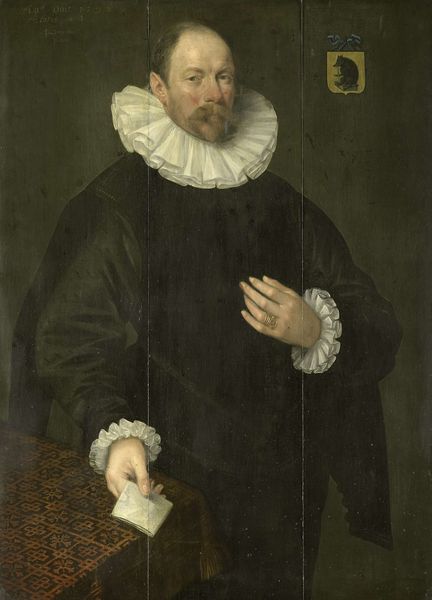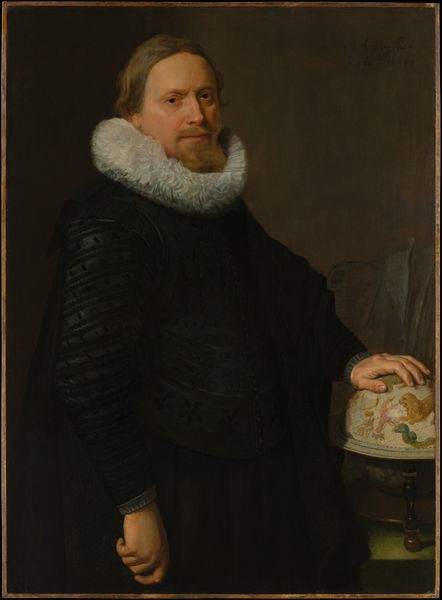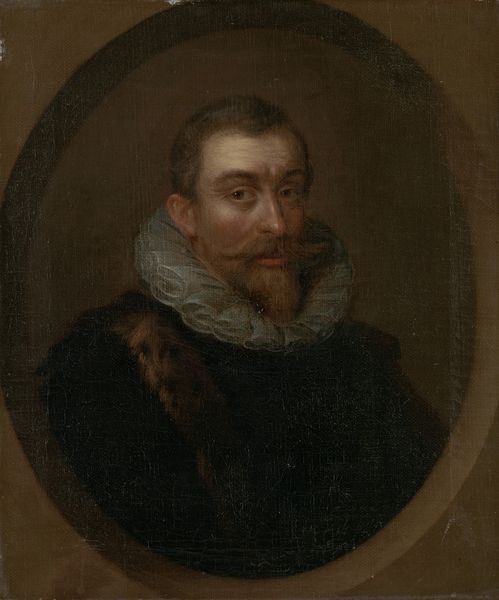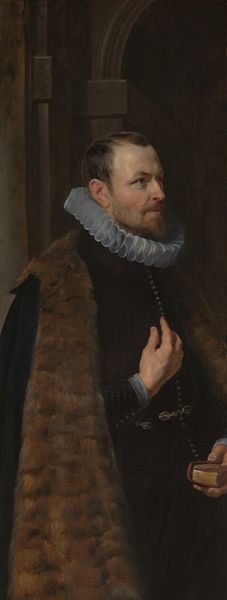
Portrait of Mattheus Augustijnsz Steyn, Councilor in the College of the Admiralty of the Northern Quarter in Dokkum 1588
0:00
0:00
painting, oil-paint
#
portrait
#
dutch-golden-age
#
portrait
#
painting
#
oil-paint
#
figuration
#
11_renaissance
#
genre-painting
#
history-painting
#
academic-art
Dimensions: height 108 cm, width 85 cm, depth 9 cm
Copyright: Rijks Museum: Open Domain
Curator: Immediately, I am struck by the stark contrast of light and shadow. It imbues the figure with a weightiness, a gravity. Editor: We are looking at Pieter Pietersz.’s oil on panel portrait of Mattheus Augustijnsz Steyn, painted in 1588. Steyn was Councilor in the College of the Admiralty of the Northern Quarter in Dokkum. Curator: The heavy, patterned fur draped over his shoulder and that remarkable ruff around his neck—both visually arresting but also so very material. Look at how the painter renders the different textures. It is designed to impress with textures and layers of fabric and fur. Editor: It's fascinating to consider the social and political context here. The Dutch Golden Age was dawning, a period of immense wealth and power for the Dutch Republic, particularly for its merchant class. These portraits served as very public displays of status. A man like Steyn, holding such a position, would certainly commission a portrait as an expression of his elevated status. Curator: Indeed. And consider how that backdrop, dark and almost oppressive, serves to thrust Steyn forward. The composition pushes his figure, emphasizing his solidity, making him appear even more commanding. Editor: He's holding a fan and has a coat of arms above him—symbols of refinement but also civic pride. This portrait isn't just about personal vanity. It communicates Steyn's contribution to society and reinforces the stability of the Dutch political landscape. It presents an almost hyper-localized portrait that shows he holds a place of local and maritime importance. Curator: Right. There's a certain performative aspect to these formal portraits. The sitter embodies specific social expectations and performs within certain institutional norms that dictated comportment, appearance, and representation. What do you think? Editor: It allows us to look closer and understand a piece that's not only beautiful and striking, but reflective of significant social context. Curator: Precisely, an intersection of artistry and cultural documentation, I would say.
Comments
No comments
Be the first to comment and join the conversation on the ultimate creative platform.
